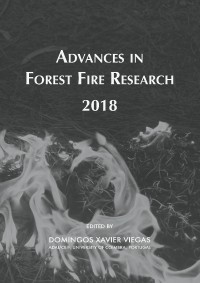Please use this identifier to cite or link to this item:
https://hdl.handle.net/10316.2/44530| Title: | The extreme weather conditions behind the destructive fires of June and October 2017 in Portugal | Authors: | Pinto, Miguel M. Hurduc, Alexandra Trigo, Ricardo M. Trigo, Isabel F. DaCamara, Carlos C. |
Keywords: | wildfires;mega-fires;weather models;Fire Weather Index;Continuous Haines Index | Issue Date: | 2018 | Publisher: | Imprensa da Universidade de Coimbra | Journal: | http://hdl.handle.net/10316.2/44517 | Abstract: | The 2017 fire season in Portugal was marked by two tragic events leading to a toll of 116 fatalities and serious impacts at social, economic, and ecological levels. The first of the two events started on June 17 and the second on October 15. With the aim to better understand and predict future similar situations, we conducted an analysis of the meteorological conditions in which the two fire events took place. First, we analyzed the events in a high-resolution meteorological context, using simulations by the Weather Research and Forecasting Model (WRF) and then within a climatic context with resource to ERA-Interim reanalysis. Fire Weather Index (FWI) was used to evaluate the meteorological conditions at the surface level while the Continuous Haines Index (CHI) was employed to assess the atmospheric instability conditions. WRF simulations show high temperature and low relative humidity for both fire events. Conversely, the October 15 event presents strong winds whereas the June 17 event show weak winds at synoptic level. However, for the June event, the model simulates several downburst phenomena, associated with a mesoscale convective system, in agreement with the Doppler radar observations that show several gust fronts associated to the convective system that developed during the evening, reinforcing the need for the CHI to assess the vertical instability conditions. Monthly climatology of daily FWI and CHI were computed for the period spanning 1979-2016. Results show that for October 15, FWI is the new absolute maximum in the daily time-series, and CHI is at the percentile 90 for the extended fire season (June to September). On the other hand, for June 17, FWI is near the percentile 75 for the extended fire season and CHI is close to the percentile 99. We conclude that both fire events were associated to extreme meteorological conditions, however their characteristics are very distinct. For the June 17 event the atmospheric instability played a main role in the fast spread of the fire, whereas for the October 15 the strong winds associated with the close passage of hurricane Ophelia, together with extreme drought conditions were the main drivers. | URI: | https://hdl.handle.net/10316.2/44530 | ISBN: | 978-989-26-16-506 (PDF) | DOI: | 10.14195/978-989-26-16-506_13 | Rights: | open access |
| Appears in Collections: | Advances in forest fire research 2018 |
Files in This Item:
| File | Description | Size | Format | |
|---|---|---|---|---|
| the_extreme_weather_conditions.pdf | 1.07 MB | Adobe PDF |  |
Items in DSpace are protected by copyright, with all rights reserved, unless otherwise indicated.
